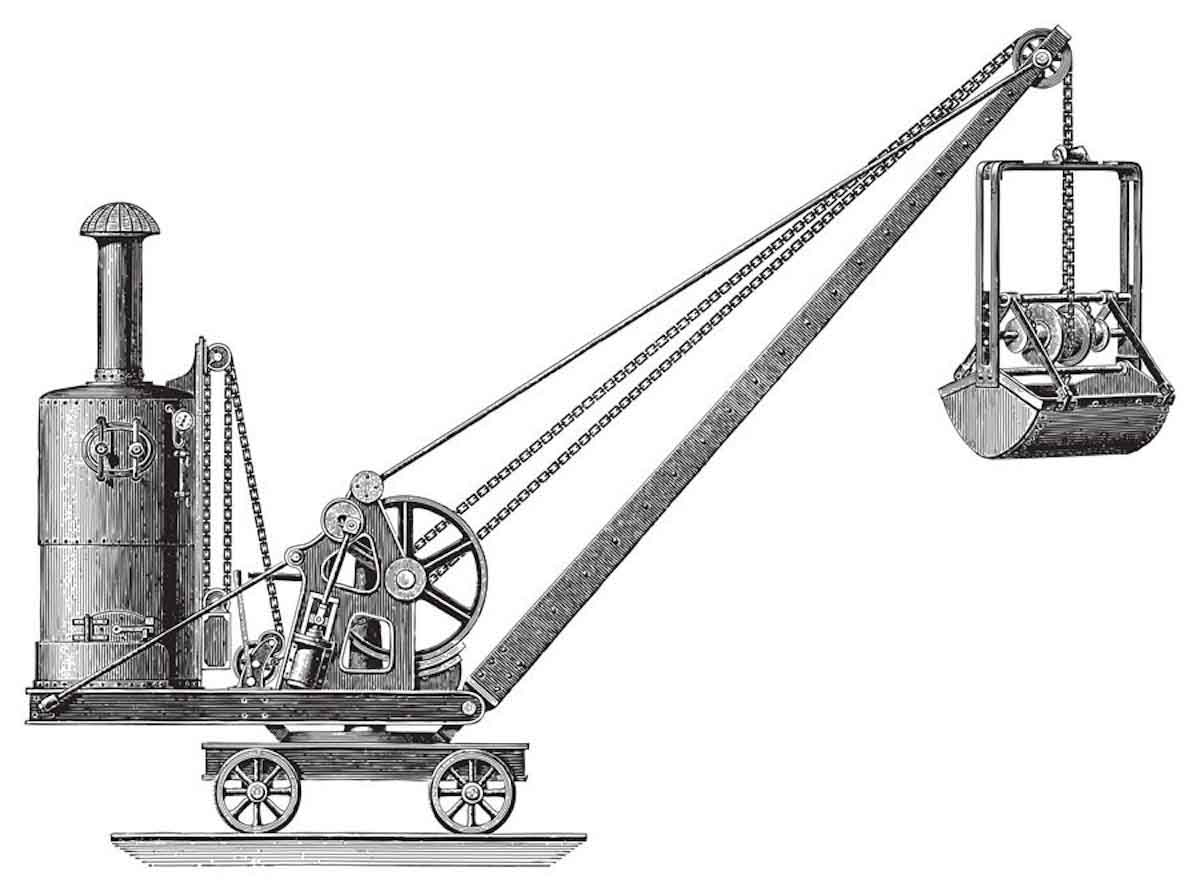Who Invented the Crane?

When we see cranes out in the world on construction sites, they seem like a modern invention, one you may assume was invented after the Industrial Revolution. There’s actually a long history of cranes before the 1800s. In fact, there are examples that extend back into ancient times. So who invented the crane?
The shadoof
This is the first type of crane, and it was invented in Mesopotamia, which is now known as modern Iraq. Circa 3000 BCE, it was used to lift water for irrigation purposes. A shadoof was simply a pivoting lever with an attached bucket. The operator (one person or maybe a person directing a donkey or horse) lowered the bucket into a well or body of water, and once the bucket was full, they raised the arm. The arm could then be pivoted to deliver water to nearby crops, irrigation channels, or other carrying implements.
Iraq is very arid and dry, but farming was made possible because they could make use of the shadoof to obtain water from the Tigris and Euphrates Rivers. While we don’t precisely know who invented this crane, this was a first step to becoming a civilization that would require tower cranes for construction purposes.
Ancient Rome
The Romans pioneered the use of the trispastos crane, which is another simple kind of crane. The three-pulley crane meant that one person working the winch could raise 330 pounds by themself. Other types of cranes involved five pulleys or a set of three-by-five pulleys that came with more than one mast. This means that 50 people would be able to move as much as 6,600 pounds of material.
This was helpful in Roman building projects because they tended to feature heavier stone blocks. For instance, the temple of Jupiter at Baalbek includes stones that weigh up to 60 tons each—one cornice block is even 100 tons, and it had to be raised to a height of about 62 feet.
The Hydraulic Crane
This was invented by Sir William Armstrong, an industrialist, engineer, and businessman who lived in Newcastle in the early nineteenth century. He invented a hydraulic crane in 1838 that was installed in the harbor to load and unload cargo. This first hydraulic crane used a ram in a closed cylinder that was pressurized. A valve regulated the amount of fluid intake according to the load on the crane. Then the mechanism pulled on a chain to lift the load.
Later, Sir Armstrong also invented the hydraulic accumulator. After all, a hydraulic crane needs water to work, and if there wasn’t any water around, you’d be out of luck. The accumulator helped supply the water to keep the pressure constant.
These days, newly revised OSHA regulations require modern crane operators to be certified through a nationally accredited agency. At West Coast Training, you can become a crane operator and rigger in eight weeks and continue a storied history. Contact us today to see if West Coast Training is right for you.
